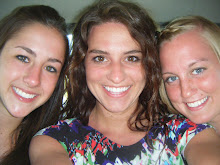 I love love loved this book. (That sentence was inspired by Jack.) Right away I had such a deep connection to Jack. I remember when I was in middle school, my language arts teacher would collect our writing assignments in a large stack. The next day, she would kneel down beside my desk and ask if she could read mine out loud. "Only if you don't say who it's by," I would always say. I did not want anyone knowing it was me. Even today, I feel much more comfortable openly expressing myself when I know my name is not attached to it. So Jack and I hit it off right away. I knew where he was coming from.
I love love loved this book. (That sentence was inspired by Jack.) Right away I had such a deep connection to Jack. I remember when I was in middle school, my language arts teacher would collect our writing assignments in a large stack. The next day, she would kneel down beside my desk and ask if she could read mine out loud. "Only if you don't say who it's by," I would always say. I did not want anyone knowing it was me. Even today, I feel much more comfortable openly expressing myself when I know my name is not attached to it. So Jack and I hit it off right away. I knew where he was coming from.This book is really special to me not only because the story is the sweetest thing I have ever heard (seriously!), but also because my mom read it to me. Yep, my mom read me this book this last weekend when I was laying sick on the couch. I cannot remember the last time she read me a book. I'm sure it hasn't been since I was a little girl. But I would suggest it to all of you. Sit down with your mom and read a book. And, I would recommend it be this one. It is powerful and playful and funny and sad and heartbreaking and heartwarming all at once. My mom and I cried about Sky. We laughed at Jack's defeated remarks about poetry. It was a time we spent together that I really appreciate and will always remember.
And every time Jack said his dog was bark bark barking, my heart melted. I will most definitely have this book in my classroom when I am a teacher. More importantly, I will most definitely have this book on my shelf at home. Maybe even on my nightstand to keep it close.
Love love love.



















.jpg)
